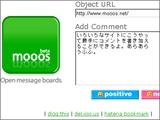Research on the Relevance of Web2.0 to Website Construction in the Mobile Phone Industry
It cannot be denied that typical web2.0 websites have emerged both domestically and internationally. Abroad, websites such as Flickr, Craigslist, LinkedIn, Tribes, Ryze, Friendster, Del.icio.us, and 43Things.com are representative examples; domestically, sites like Douban, Tudou, Dianping, Diglog, and Baidu Tieba lead the way. However, astute observers will notice that these web2.0 websites primarily focus on content related to news, reading, entertainment, and dining—topics that easily spark online discussions among users. So, how relevant is Web2.0 to the construction of websites in the mobile phone industry? This is indeed a topic worth exploring!
The transition of mobile websites towards web2.0 is not a new concept. Our website "Mobile Era" (www.tel168.com) has already begun this transformation by introducing features such as personal spaces, groups, and tags. Following the principle of "front-loading the backend," we gradually expand user permissions within the site to enhance user participation. However, from a practical standpoint, this transformation has not yet been successful.



